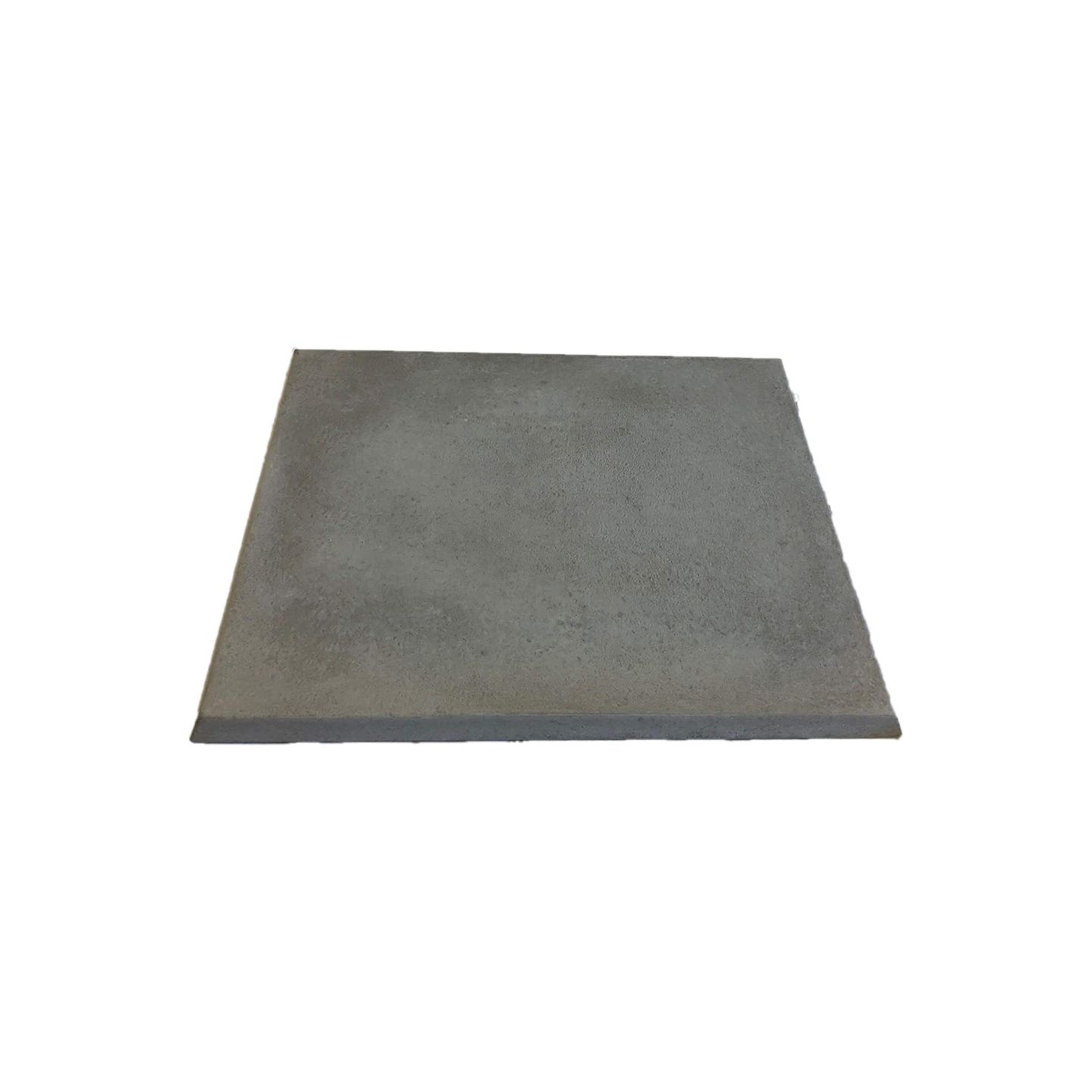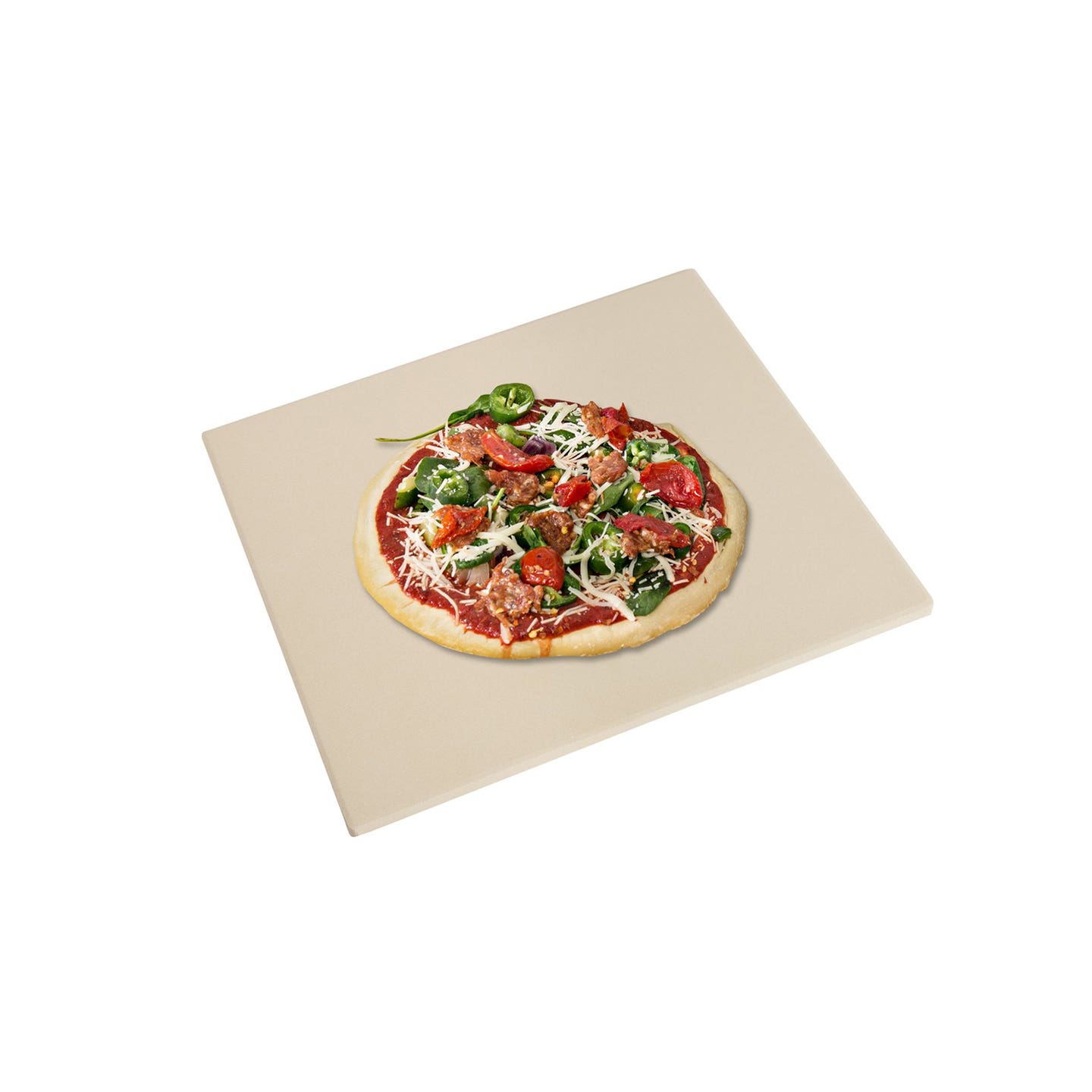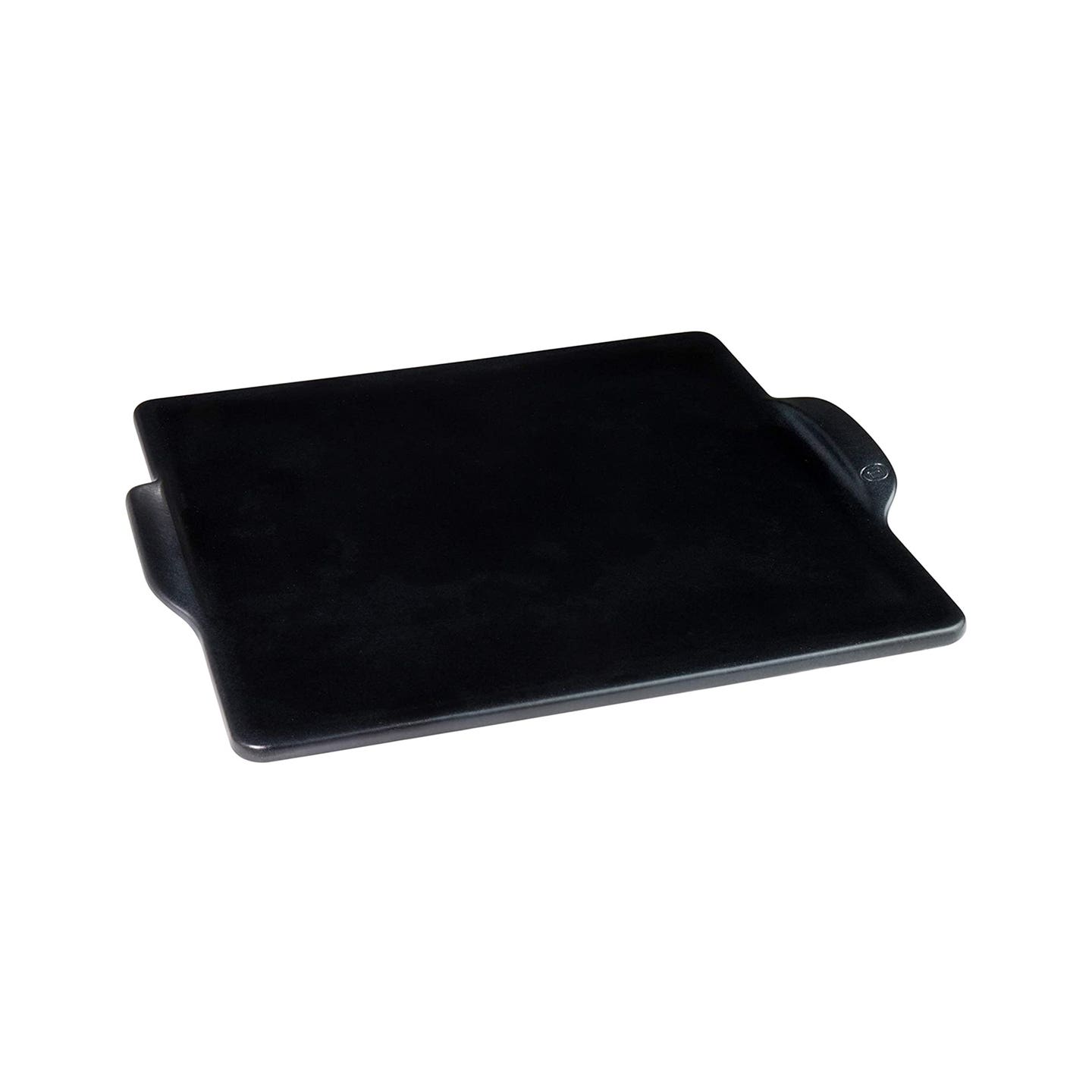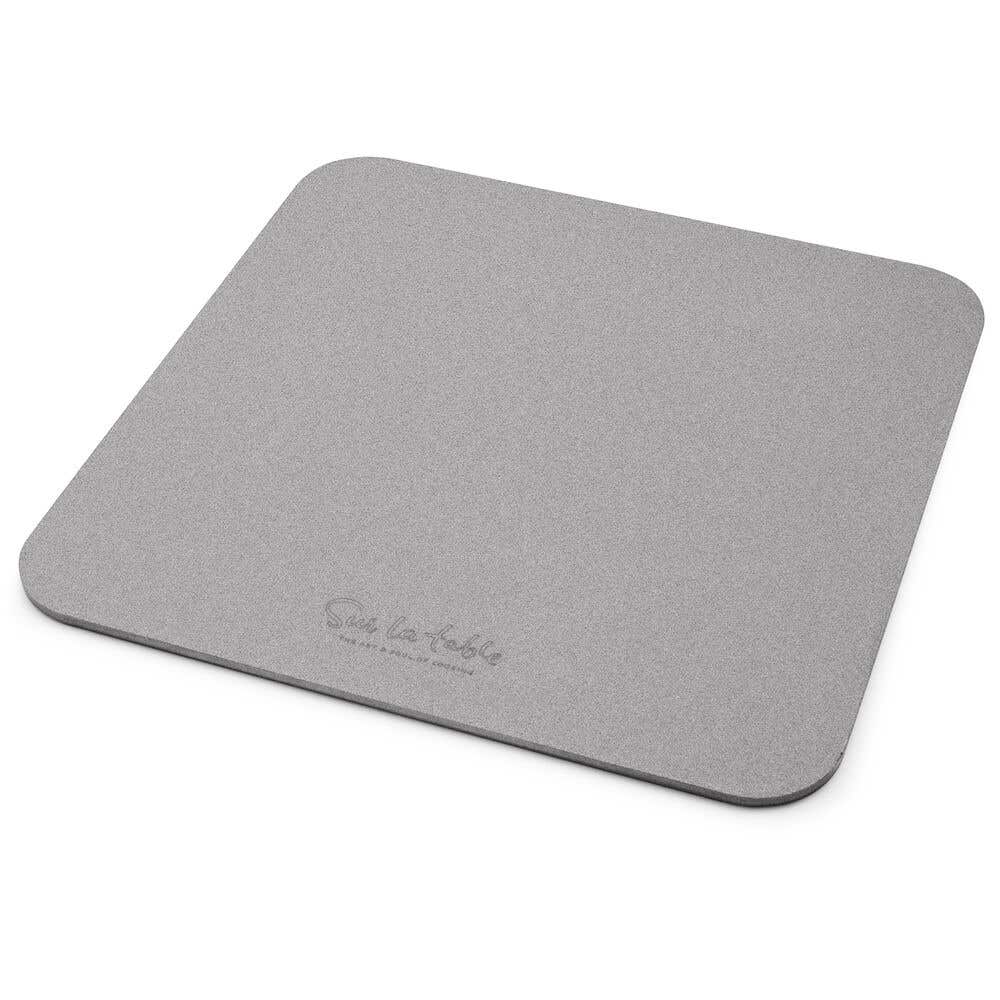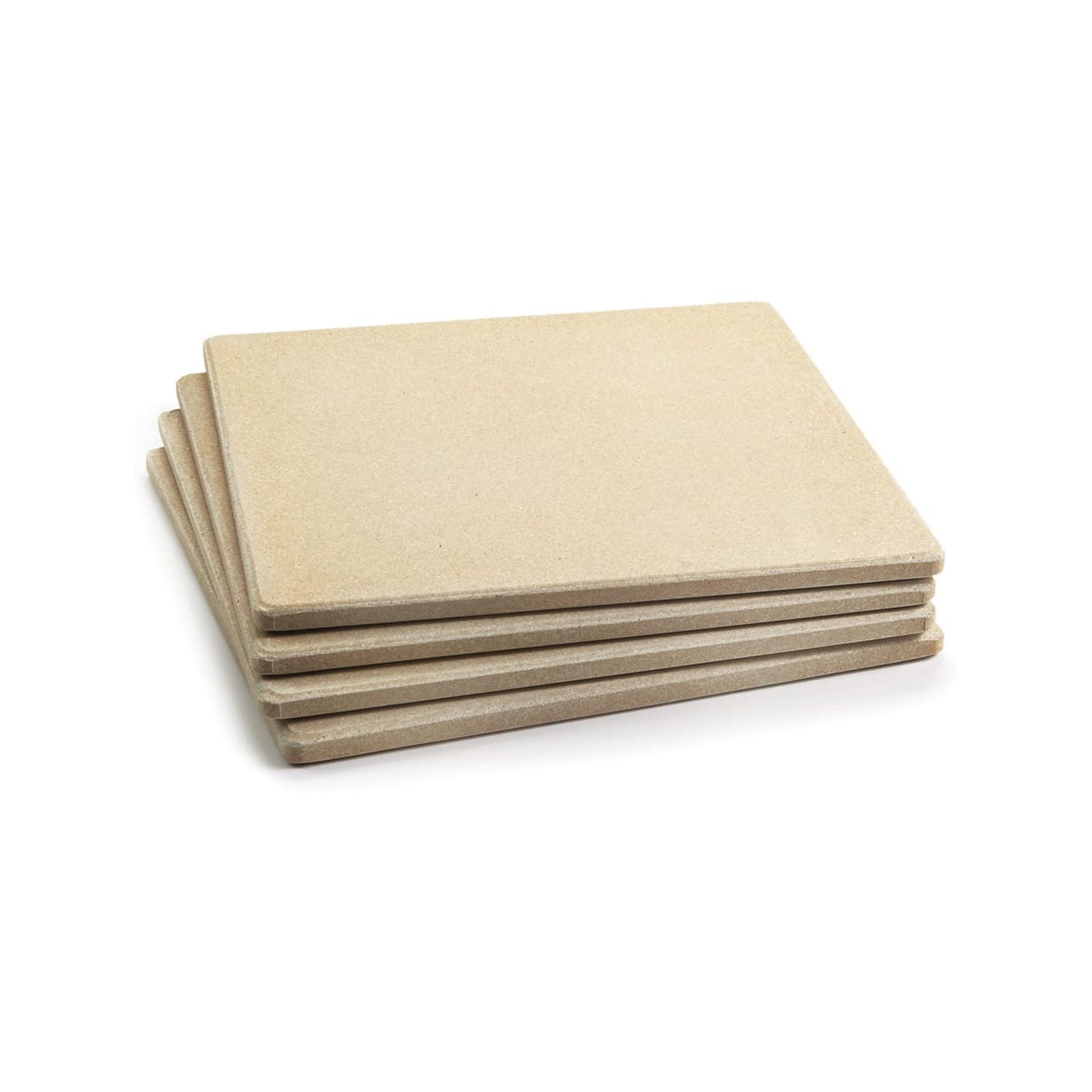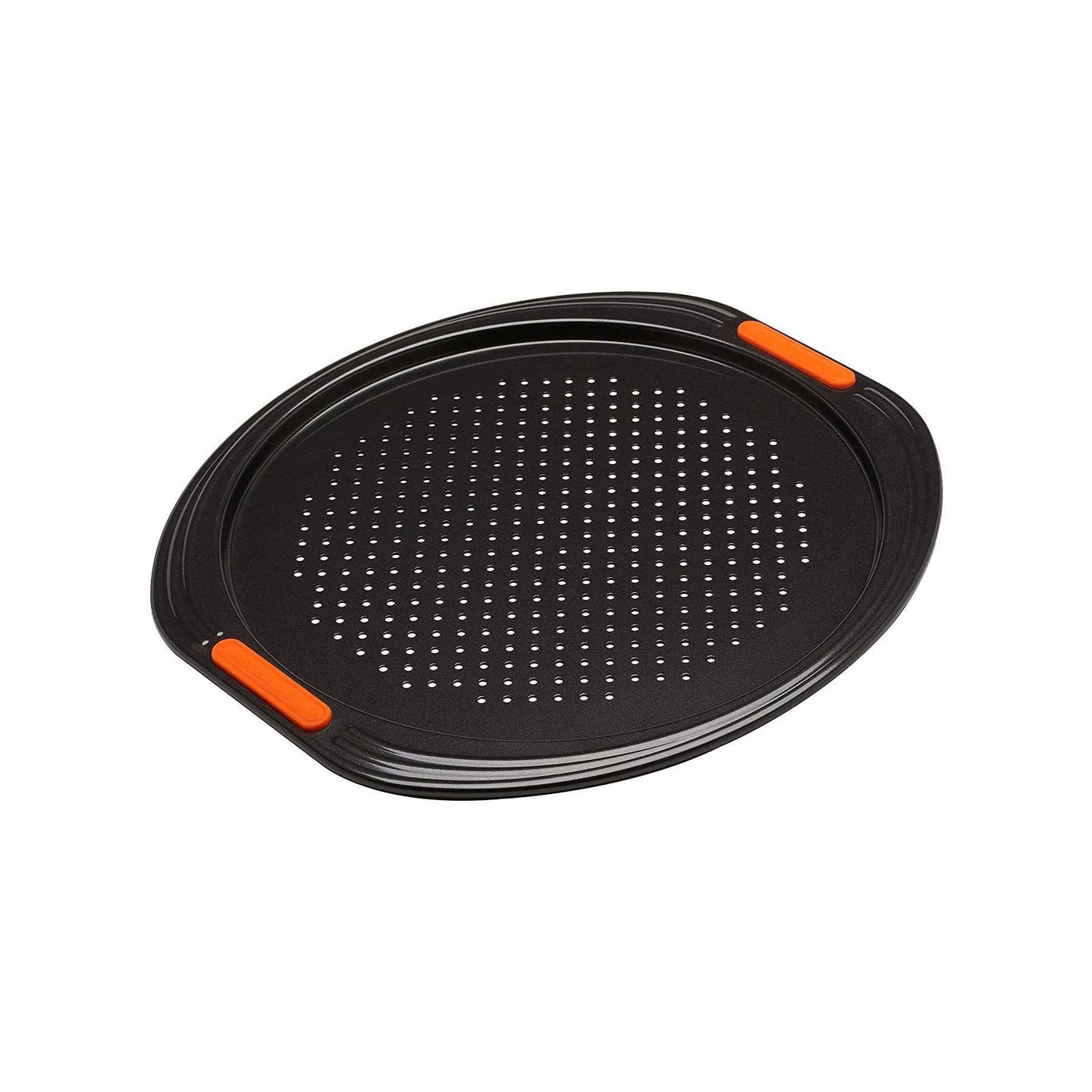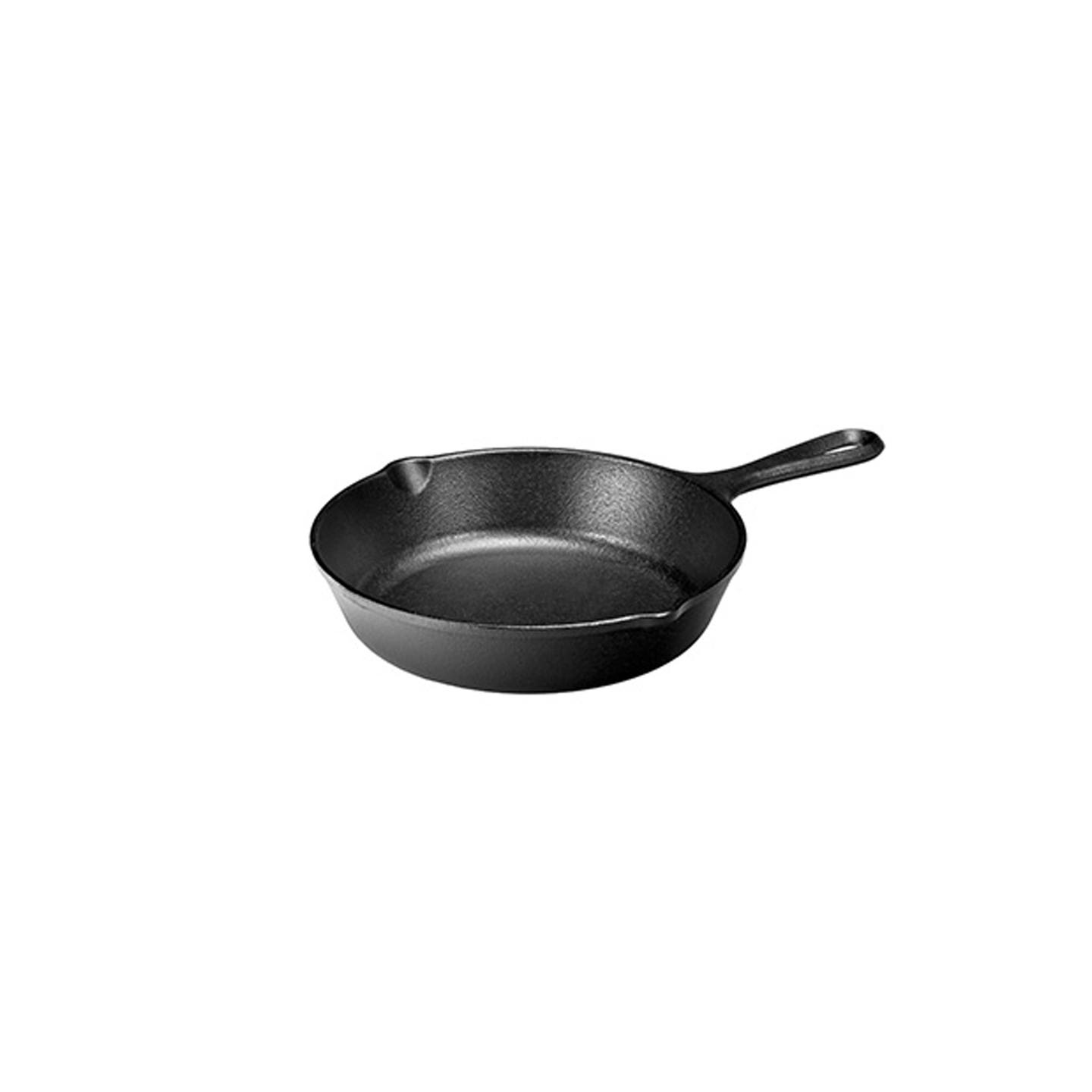The Best Pizza Stones, Steels, and Pans for Making Pies That Are Truly Better Than Delivery
Unlock a new world of homemade baking with these expert-sourced recommendations.
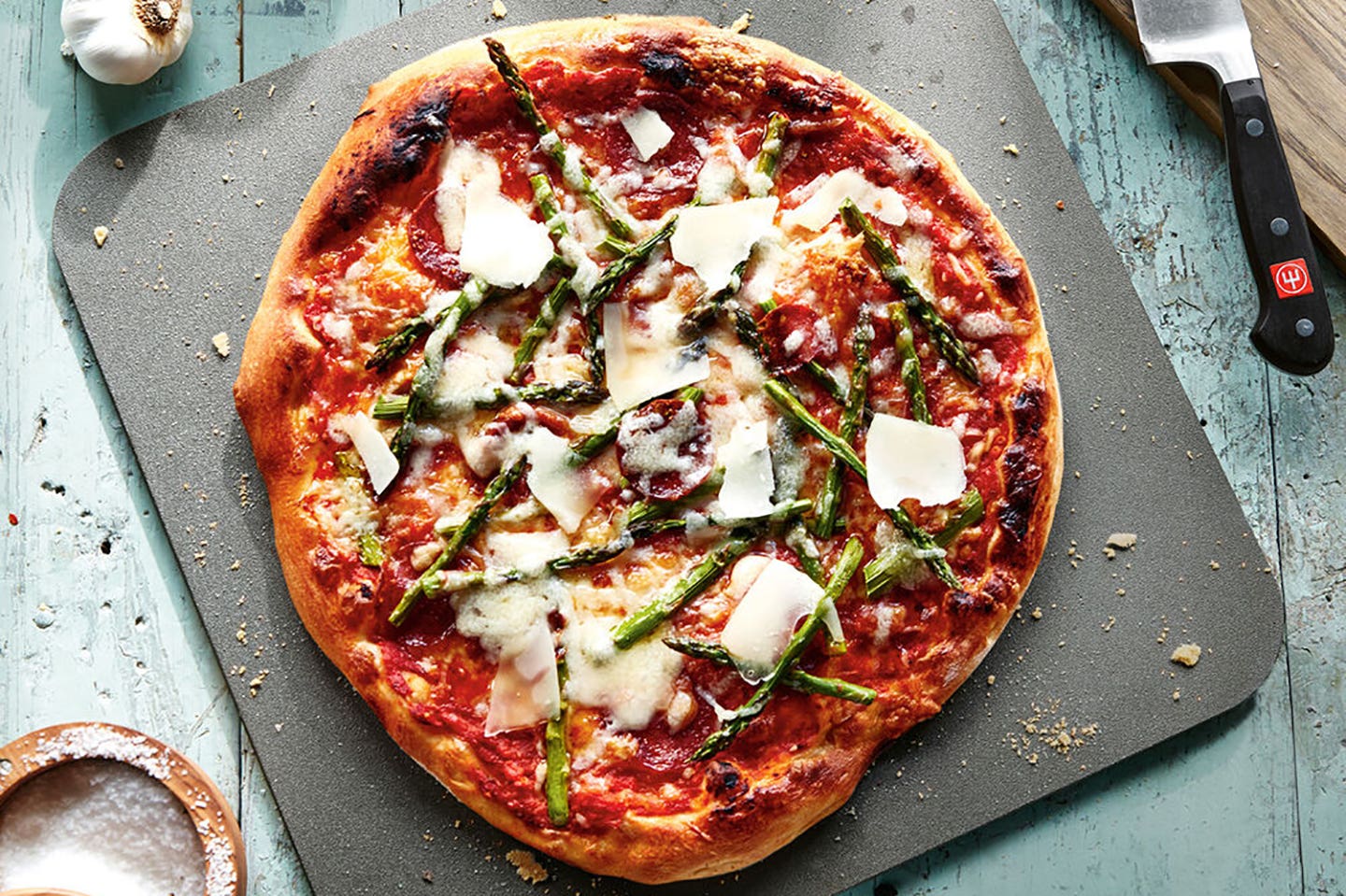
Obtaining a pizza stone, steel, or pan might not be one of your kitchen priorities. We’ve all cooked plenty of fresh or frozen pizzas on wobbly baking sheets, but one bite of a pizza stone-cooked pie will change your mind for good.
The best pizza stones are true baking workhorses, yielding chewy bagels, burnished flatbreads, and hearty, rustic loaves (rather than delicate, eggy ones). They enhance crusts in fruit pies and galettes, too, ensuring high marks from your resident bake-off judge. Some are even grill-compatible, allowing you to take your pizza game outdoors. By utilizing some of the best tools on the market, you’ll soon be crafting restaurant-worthy pizza with a deep golden crust from home. There’s a bit of a learning curve, but practice will yield tasty results. Here are our seven favorites, plus features to keep in mind and some hot tips from the experts.
- Best Overall: FibraMent-D Home Oven Baking Stone
- Best Value: Honey-Can-Do Rectangular Pizza Stone
- Best Ceramic: Emile Henry French Ceramic Rectangular Pizza Stone
- Best Steel: Sur La Table Baking Steel
- Best Lightweight: Outset Ceramic Tiles
- Best Pan: Le Creuset Toughened Nonstick Bakeware Pizza Pan
- Best Cast Iron: Lodge 8-inch Skillet
Features to Keep in Mind
Shape
Round, square, and rectangular options abound, and choosing a shape mostly comes down to personal preference. Leading baker and instructor Richard Miscovich, author of From the Wood-Fired Oven, prefers square for easier storage and organization, but doesn’t see a performance or heating issue with round or recto-linear pizza stones. Be sure to consider your oven’s real estate and measure the interior before buying a stone: a 1-inch gap between the stone/steel and the oven wall will ensure proper airflow for a crisper crust.
Material
Andrew Janjigian, a writer and baking instructor who runs the bread-centric weekly newsletter Wordloaf, advises material is a key consideration when picking a stone. The main differences come down to heat conduction and weight. Lightweight ceramic is good for beginners—it’s an affordable material and a fine conductor of heat, albeit a little fragile. Cordierite (a FDA-approved compound mineral stone) is prized among serious high-heat bakers. Durable steel runs hotter and faster than cordierite or ceramic, but is a hefty investment, both literally and price-wise. Selecting a material means weighing your preferences for cost and performance, and Miscovich advises that maximum heat utilization will come with some weight. “If it was light, it wouldn’t really be doing the job of transferring heat very well,” he says.
Heating Temperature
A pizza stone's worst nightmare? Extreme fluctuations in temperature. Placing frozen pizza on a hot stone, placing a hot pizza stone on a cool countertop, or plunging a hot stone in water are all recipes for disaster. To prevent damage from thermal shock, always place stones and steels in a cold oven and preheat. (Be patient and give yourself an hour for the oven and the stone/steel to reach maximum heat.) “When using either a stone or a steel, place it on the upper oven rack or one down so the cheese can brown while the bottom crisps,” says Janjigian. This will ensure you are as close as possible to the top of the oven while still leaving room to easily get your pizza in and out. And don’t forget to safeguard your hands with protective oven mitts.
Care and Maintenance
After transferring your cooked pizza to a suitable cutting board, let the stone or steel cool completely before handling. Other than the obvious risk of a nasty burn, dramatic changes in temperature can result in damage. Then, brush off any debris and dry scrape the surface using a stiff plastic scraper to tackle the stubborn bits.
Because stones are highly porous and risk cracking if heated while wet, you definitely do not want to submerge them in water. Steel also can be damaged by water, although oxidation is the enemy here. For this reason, you should never leave steel in the oven and wipe away debris instead of washing to avoid rust. (If steel looks dull or is covered with rust spots, it requires re-seasoning: rub a little flaxseed or food grade oil onto its surface, use a paper towel to evenly oil the stone, and wipe off any excess.) With both a stone and steel, there’s no need to make the surface look “like new.” Over time, both will develop a natural patina.
Our Top Picks
Best Overall: FibraMent-D Home Oven Baking Stone
Best Overall
This baking stone satisfies the needs of passionate amateurs as well as dedicated professionals. It’s a workhorse for cooking a variety of pizzas, pastries, bagels, and breads. The 3/4-inch thick stone comes in an assortment of standard and customizable sizes, making it a great multi-purpose baking surface. This stone from FibraMent-D provides ideal heat transfer, high thermal mass, and has a devoted following.
Best Value: Honey-Can-Do Rectangular Pizza Stone
Best Value
If you’re hoping to bake on an ample-sized 14 x 16-inch surface without breaking the bank, consider this rectangular option. Made from a combination of Cordierite plus a specially engineered “heat core”, this stone promotes steady heat for a well-baked crust. It’s grill safe, unlocking a future of al fresco pizza-ing. Plus, its moderate price point makes it a great gift for homemade pizza (or bread) enthusiasts.
Best Ceramic
A classic beauty, this glass-glazed ceramic stone crafted from Burgundian clay is equally at home in the oven or on the grill. It performs reliably and cleans up nicely, with raised handles for easy maneuvering. But be sure to factor in those handles when measuring the stone against the width of your oven—the dimensions are 19.7 x 14 inches and it requires a little more height clearance.
Best Steel: Sur La Table Baking Steel
Best Steel
“If you’re serious about making the best possible pizza and not interested in bread, choose a thick baking steel,” Janjigian says. “Steel is the Cadillac of pizza baking surfaces.” This 100 percent recycled steel one from Sur La Table certainly fits the bill—it measures an ideal 1/4-inch thick and tips the scales at nearly 16 pounds. Pizza and bread fanatics applaud the steel’s lightning fast cook time, which aids in producing blistering crusts and substantial rise in both ovens and grills. Far sturdier than a stone, it’s considered an integral tool for any serious pizza or bread baker’s arsenal.
Best Lightweight: Set of Four Ceramic Tiles by Outset
Best Lightweight
This set of four 7 1/2-inch square cordierite stones can easily be reconfigured in an oven or on a grill. These have the words “personal” written all over them; perfect for individual pizzas, hand-held calzones, or choosing-your-own-galette-adventures. These lightweight, easily storable tiles are ideal for anyone wishing to dip their toe into the oven stone waters with a low-cost, minimally intrusive addition to the kitchen.
Best Pan
Weighing in at a little under two pounds, this generously sized, non-stick, silicone handled pan is fashioned out of heavy gauge carbon steel. The perforated construction promotes even air circulation and its nonstick finish laughs in the face of the most stubborn cheesy meltdown. Hand washing and thorough drying will contribute to the pan’s longevity, but Le Creuset’s lifetime guarantee sweetens the purchase. It’s an easily storable addition to both streamlined and well-stocked kitchens.
Best Cast Iron: Lodge 8-inch Skillet
Best Cast Iron
Yes, recommending a Lodge 8-inch cast iron skillet might be considered thinking outside the (pizza) box. But its high sides, coupled with superior heat retention and distribution, delivers a hefty pie with a crispy crust that’s perfect for one or two people. It is also an ideal pan for reheating cold pizza when you have a few leftover slices. Janjigian warns cast iron is a different beast than traditional stones or steels, yielding a different style of pizza with thick slices, crispy edges, and a puffy golden crust. “I’m a fan, but it’s a type of pan pizza—cast iron isn’t really a substitute for a stone or steel,” he says.
Ask the Pros
Can I use parchment paper on a pizza stone?
Parchment paper usually allows an easier transfer from your work surface to the oven, but your pizza stone should be too hot to sustain the parchment (which can singe and burn anywhere upwards of 450 degrees Fahrenheit). Trust me: Flakes of charred parchment will not enhance your homemade pizza experience. If you’re making a juicy fruit pie or other item baked around 425 degrees Fahrenheit or below, a parchment-lined baking stone is a great way to minimize clean-up.
Do I need to oil a pizza stone?
It is a common misunderstanding that oiling a pizza stone is necessary. While a very thin coating of oil might help a pizza from sticking, it tends to smoke in hot ovens. A light dusting of semolina flour on its own should suffice. Avoid adding cornmeal to the mix—its natural oils will smoke and cause an unpleasant, acrid taste.”
When is the perfect time to put a pizza stone in the oven?
A pizza stone needs gradual heating and should be placed into a cold oven to come up to temperature. Home ovens tend to take about an hour to reach the optimal baking temperature of 500 degrees Fahrenheit, depending on the brand of the oven and the size of the stone, so plan accordingly.
Keep Reading
Continue to Next Story
